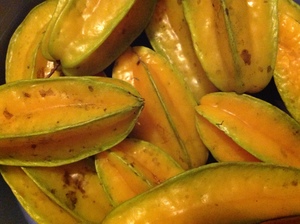
Richard Manning writes in Harpers, February 2004,
The oil we eat: Following the food chain back to Iraq,
that most plants live in diverse stands of many species,
because that way they protect each other and provide services to each other.
There is a very narrow group of annuals, however, that grow in patches of a single species and store almost all of their income as seed, a tight bundle of carbohydrates easily exploited by seed eaters such as ourselves. Under normal circumstances, this eggs-in-one-basket strategy is a dumb idea for a plant. But not during catastrophes such as floods, fires, and volcanic eruptions. Such catastrophes strip established plant communities and create opportunities for wind-scattered entrepreneurial seed bearers. It is no accident that no matter where agriculture sprouted on the globe, it always happened near rivers. You might assume, as many have, that this is because the plants needed the water or nutrients. Mostly this is not true. They needed the power of flooding, which scoured landscapes and stripped out competitors. Nor is it an accident, I think, that agriculture arose independently and simultaneously around the globe just as the last ice age ended, a time of enormous upheaval when glacial melt let loose sea-size lakes to create tidal waves of erosion. It was a time of catastrophe.
Corn, rice, and wheat are especially adapted to catastrophe. It is their niche. In the natural scheme of things, a catastrophe would create a blank slate, bare soil, that was good for them. Then, under normal circumstances, succession would quickly close that niche. The annuals would colonize. Their roots would stabilize the soil, accumulate organic matter, provide cover. Eventually the catastrophic niche would close. Farming is the process of ripping that niche open again and again. It is an annual artificial catastrophe, and it requires the equivalent of three or four tons of TNT per acre for a modern American farm. Iowa’s fields require the energy of 4,000 Nagasaki bombs every year.
And what’s the net benefit?
Continue reading →
of the coastal plain. I will try to include as many of the following as I can get to in my allotted time slot (not necessarily in this order): Asian yard long beans, bananas, black walnuts, bunching onions, cactus pears, carambola Continue reading


